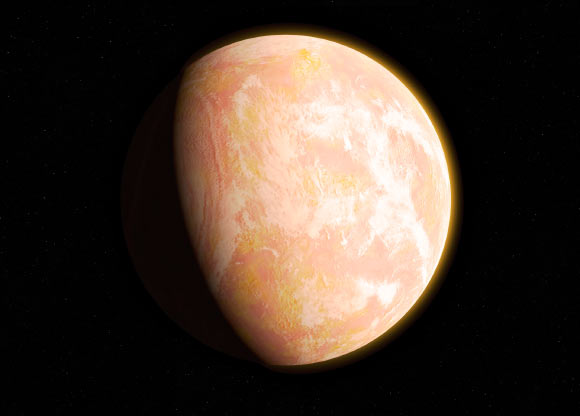About 4 billion years ago (Hadean eon), our planet was entirely different than it is now. It was barren, smooth and almost entirely under water with a few small islands, according to new research from the Australian National University.

Artist’s conception of early Earth. Image credit: NASA’s Goddard Space Flight Center / Francis Reddy.
“The history of the Earth is like a book with its first chapter ripped out with no surviving rocks from the very early period, but we’ve used these trace elements of zircon to build a profile of the world at that time,” said lead author Dr. Antony Burnham, from the Research School of Earth Sciences at the Australian National University.
Dr. Burnham and his colleague, Dr. Andrew Berry, studied the oldest known samples of Earth (up to 4.4 billion years old) — tiny grains of zircon from sandstone rocks of the Jack Hills in Australia.
“Our research indicates there were no mountains and continental collisions during Earth’s first 700 million years or more of existence — it was a much more quiet and dull place,” Dr. Burnham said.
“Our findings also showed that there are strong similarities with zircon from the types of rocks that predominated for the following 1.5 billion years, suggesting that it took the Earth a long time to evolve into the planet that we know today.”
“The zircon grains that eroded out of the oldest rocks were like skin cells found at a crime scene,” he noted.
“We used the granites of southeast Australia to decipher the link between zircon composition and magma type, and built a picture of what those missing rocks were.”
The researchers found that the zircon crystals were created by melting older rocks rather than sediments.
“Sediment melting is characteristic of major continental collisions, such as the Himalayas, so it appears that such events did not occur during these early stages of Earth’s history,” Dr. Burnham said.
“Scientists in the field were able to build on each other’s work to gain a better understanding of early Earth.”
The findings appear today in the journal Nature Geoscience.
_____
A.D. Burnham & A.J. Berry. Formation of Hadean granites by melting of igneous crust. Nature Geoscience, published online May 8, 2017; doi: 10.1038/ngeo2942







